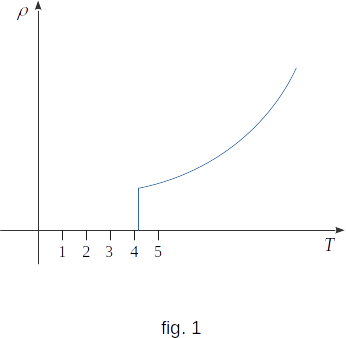From the Direct electric current
94. Superconductivity
In 1911, the Dutch physicist Heike Kamerlingh Onnes discovered a remarkable phenomenon - superconductivity. He found that when mercury cooled in liquid helium, its resistance first changed gradually, and then at \(4.1^0\,K\,\) it drops to zero with a jump (fig. 1). Many more superconducting metals, alloys and some chemical compounds were subsequently discovered.

Superconductivity is observed at very low temperatures: not above \(18^0\,K.\) The table shows the transition temperatures to superconducting state for some substances.
| Substance | Superconducting Transition Temperature, \(^0\,K\) | Substance | Superconducting Transition Temperature, \(^0\,K\) |
|---|---|---|---|
| Titanium | 0.4 | Tin | 3.8 |
| Uranium | 0.8 | Mercury | 4.1 |
| Zinc | 0.9 | Lead | 7.2 |
| Aluminum | 1.2 | Nitrate Niobium | 15.2 |
If an electric current is activated in the superconducting ring, it will remain constant for almost any period of time. In a normal non-superconducting ring, however, the current will attenuate quickly.
Superconductors are widely used in practice. For example, powerful superconducting electromagnets are built that create a strong magnetic field over long periods of time with no energy consumption. After all, no heat is generated in the superconducting winding.
Superconducting devices are used as miniature switching and storage elements in modern computing machines.